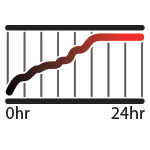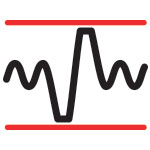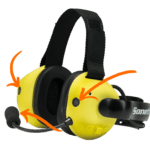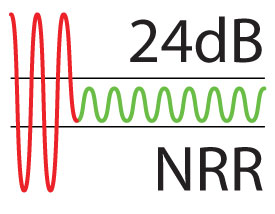How It Works: Hearing Protection
Voice communication only works if you can hear it. To create the most effective wireless communication system available for workers in challenging, high-noise environments, Sonetics puts as much emphasis on hearing as we do on talking.
Plus, too much noise hurts your ears, causes excess stress, and can actually wear you out quicker. In the U.S., 22 million workers are exposed to dangerous noise levels every year. Companies spend $242 million every year on workers’ compensation costs for hearing loss disability.
To protect workers’ hearing while enhancing their ability to use team voice communication, Sonetics wireless headsets mount a three-pronged attack against noise.
Noise Reduction Rating Rules
In both behind-the-head and hard-hat configurations, Sonetics wireless headsets feature a Noise Reduction Rating (NRR) of 24 decibels (dB). The NRR rating of a hearing protection device (HPD) is administered under the authority of the Environmental Protection Agency (EPA) per the Noise Control Act of 1972. In over-the-ear headsets, NRR pertains to how much noise is filtered out by the ear cup seal.
OSHA regulates worker exposure to 90 dB of noise for a maximum of eight hours per day. Wearing Sonetics wireless headsets in a 90 dB environment instantly reduces noise exposure to a safe 70 dB. But Sonetics wireless headset hearing protection doesn’t stop at the ear cup seal.
Personal Sound Dosimeter Innovation

Sound dosimeters measure noise exposure over a period of time. They track sound pressure levels and then calculate an average noise dosage throughout a shift. Sound dosimeters help determine whether engineering controls are needed or—if HPDs are required—the minimum NRR allowed for those HPDs.
Chances are that a sound dosimeter isn’t a go-to tool that you use every day. It’s commonly used in high-noise work environments that have hearing conservation programs in place. Most workers are at the mercy of management when it comes to measuring noise exposure, especially workers at temporary worksites like construction zones, public works projects and towing recoveries.
Every Sonetics wireless headset includes a personal sound dosimeter, and every worker wearing a headset has his or her noise exposure measured over time. The headset automatically adjusts headset volume to keep your ears safe. There are also audible voice alerts to let you know if and when noise is nearing exposure limits. Once limits are exceeded, the system automatically adjusts input volume to ensure compliance with hearing protection standards.
Noise Suppression: Avoid Surprises

Sonetics wireless headsets provide active hearing protection. Passive HPDs such as earmuffs or ear plugs simply limit sound wave intensity as they enter your ear. Active HPDs engage technologies such as personal sound dosimeters, stereo listen-through technology and noise suppression to combat noises.
Sonetics’ active noise suppression technology works with both the stereo listen-through microphones and the voice microphone. Active noise suppression functionality limits high impulse events such as gunshots and jet engine starts from being transmitted to the speakers in the ear domes. It’s an instant of silence followed by the return of normal voice and environmental sound.
Hearing Safety Without Isolation

Make no mistake. Hearing protection is big business. By 2021, the HPD market is expected to reach $1.9 billion globally. However, Sonetics are the only headsets to address hearing protection as well as situational awareness, mobility and wireless communication.
In addition to noise suppression, listen-through technology prevents the isolation you can feel simply by using earplugs or muffs. Many workers opt out of hearing protection because they fear more what they won’t hear than what they will. Stereo listen-through technology helps you control how much ambient sound you want to hear and is sensitive enough so that you can perceive whether sound is coming from in front, from behind or to the side.
Another challenge to wearing hearing protection is that it makes voice communication difficult. You either try to shout through the protection or remove it to talk with someone. The auto-leveling microphone in Sonetics wireless headsets lets you hold a conversation at normal volume more easily with teammates up to 1,600 feet away even if you’re standing right next to the source of peak noise levels (e.g., diesel engines).
Remember, noise-induced hearing loss (NIHL) is permanent. Workers who wear Sonetics wireless headsets for hearing protection can also hear voice communication in their high-noise work environment. More importantly, they can hear their families, a ballgame or the neighbor’s dog howling at the full moon.
